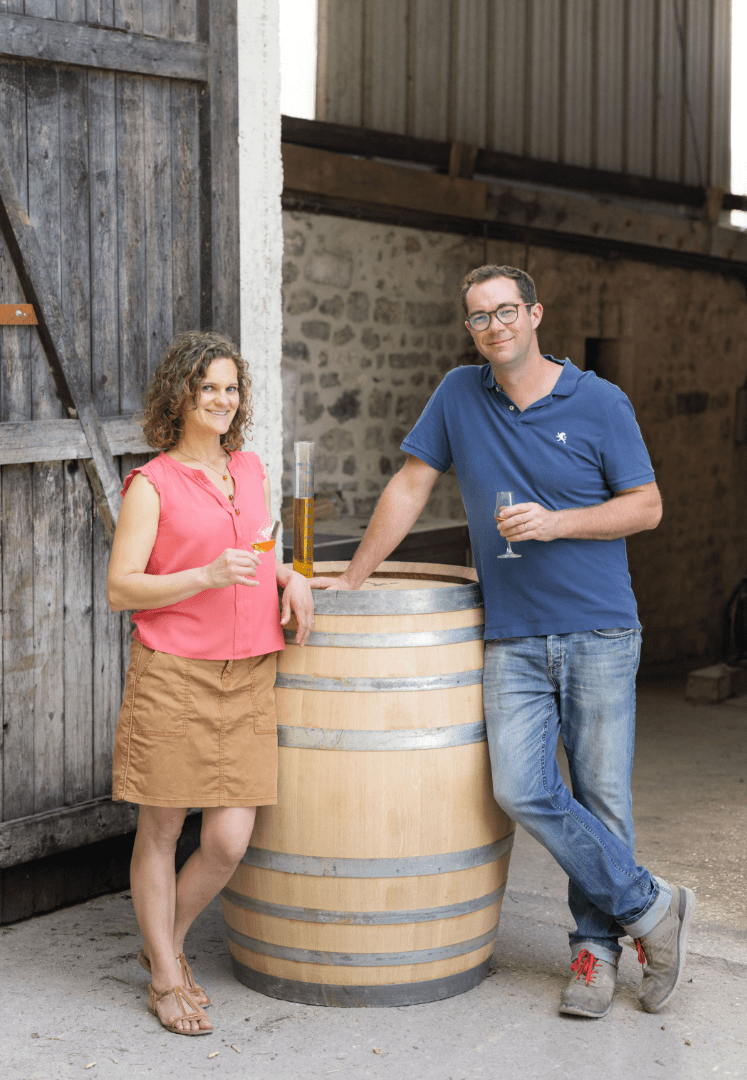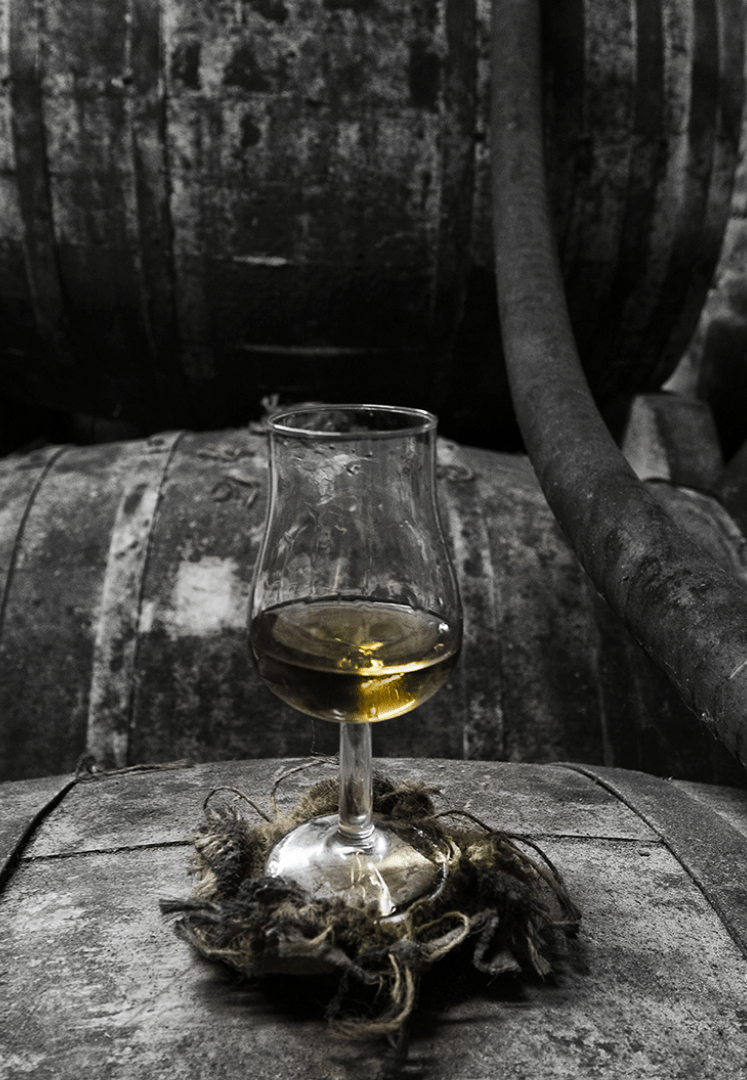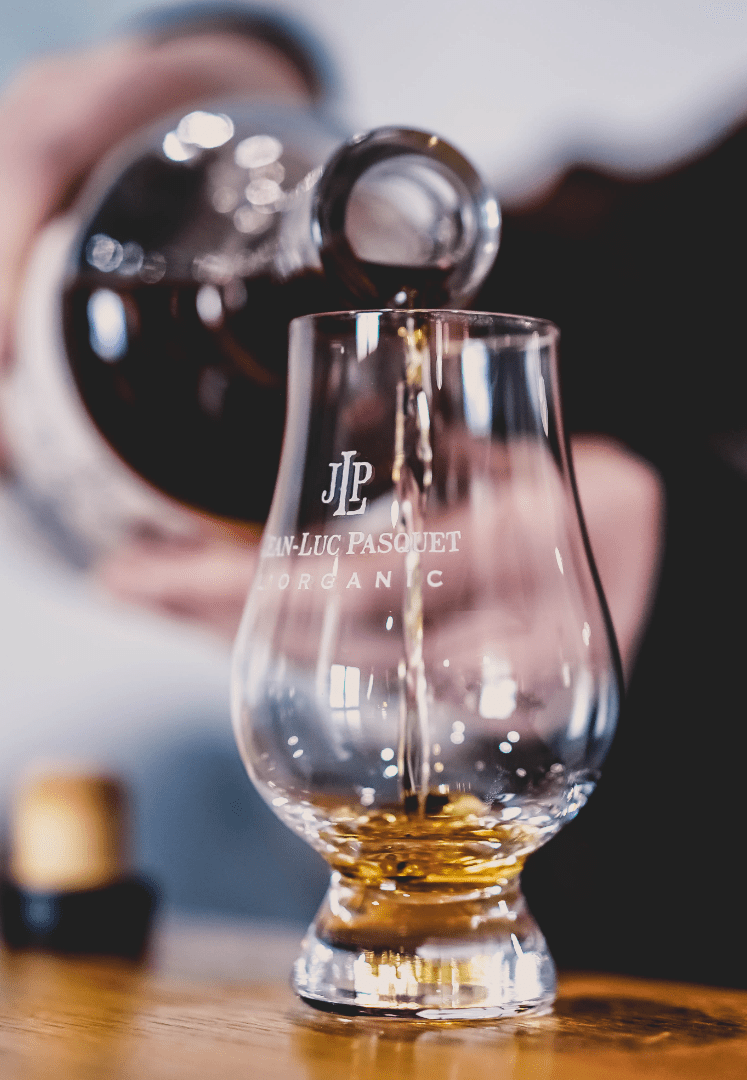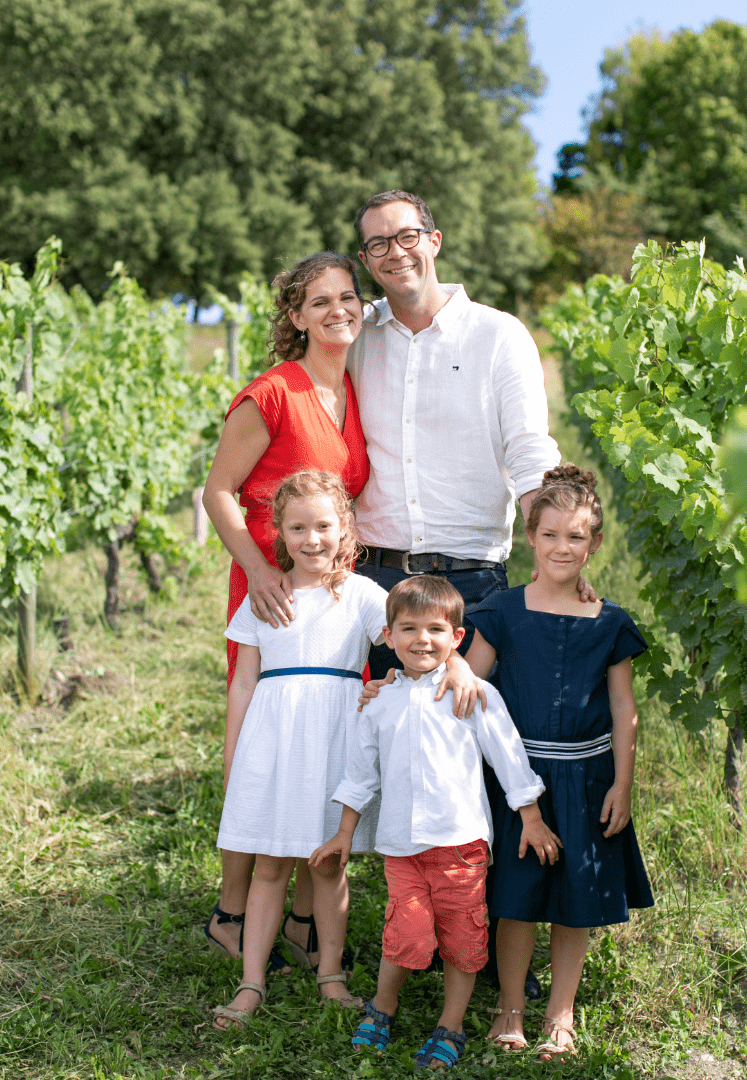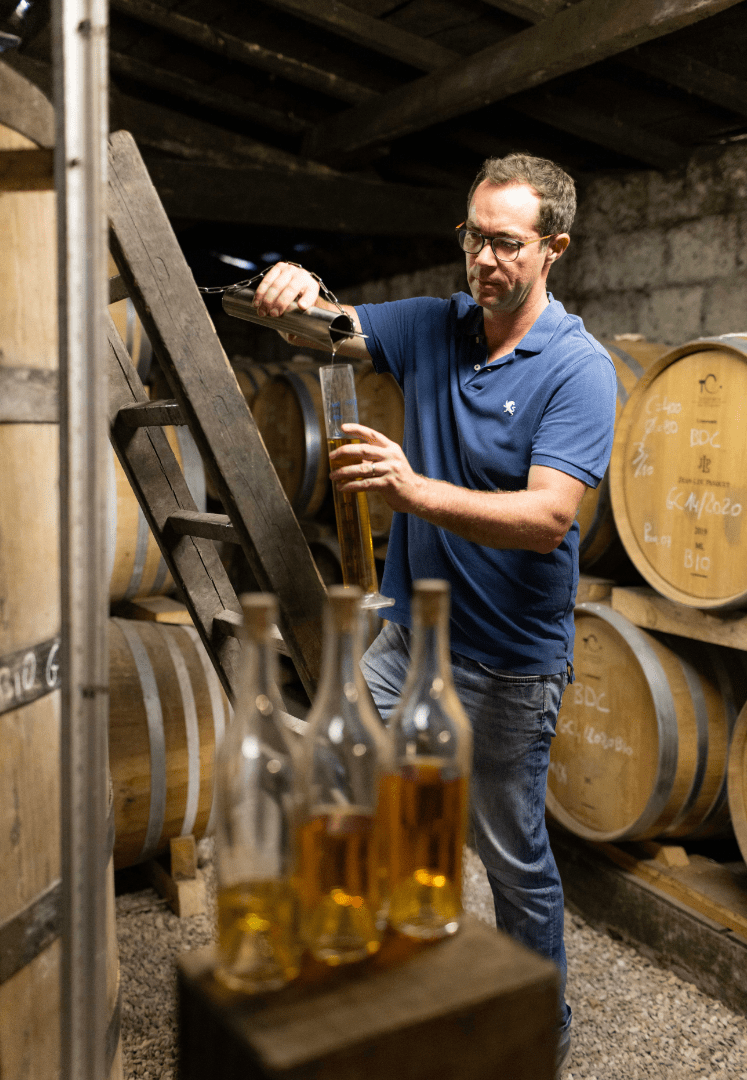The flavor profile of the eaux-de-vie will evolve differently according to the humidity level, more concentrated and alcoholic in a dry cellar and rounder and more mellow in a humid cellar. Regularly, with Jean in the lead, we taste the eaux-de-vie during their maturation process to ensure that it is going on as anticipated. It happens that certain barrels develop an aroma more conducive to a particular quality, and their destiny is changed.
At still strength, 71% alcohol by volume, cognac is too strong to be tasted and enjoyed by most. It must be at least 40% alcohol by volume to be considered as cognac though. During the long maturation time, it is our work to regularly and gradually “reduce” the cognac with pure reverse-osmose water. This is a precise job that ends in a drip by drip system, as this incorporation must be done slowly and progressively.
When the cognac is at its optimal alcoholic percentage, we can prepare to bottle it on site and by hand.
